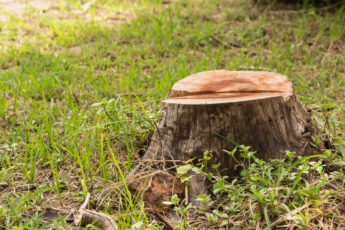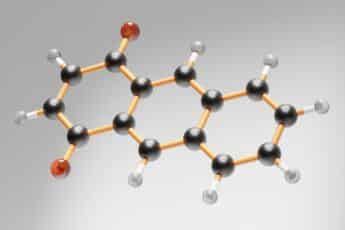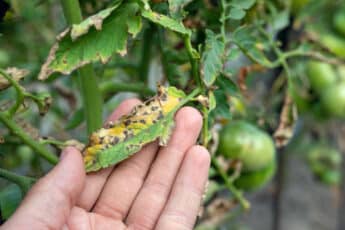Trees are vital to our ecosystems and landscapes, offering shade, beauty, and environmental benefits. However, like all living organisms, trees can develop defects that compromise their health, safety, and structural integrity. A tree problem can pose a severe risk if you don’t know what to check for. Knowing and managing severe tree defects can prevent catastrophic and potentially fatal damage from falling branches and trees. Recognizing these defects early is crucial for avoiding potential hazards and ensuring the long-term health of trees. This article outlines some of the most common tree defects, their causes, and how they can be managed.
Cracks and Splits
Cracks are longitudinal openings that can appear in a tree’s trunk or branches. They may result from internal stress, mechanical damage, or environmental factors such as freezing and thawing cycles.
There are two main types of cracks:
- Vertical Cracks: These run up and down the trunk and are often caused by rapid temperature changes or the tree’s internal growth pressure.
- Horizontal Cracks are less common. They may indicate serious structural issues and are often a sign of internal decay or damage.
If not addressed, cracks can deepen, potentially leading to tree failure.
Cankers
Cankers are localized areas of dead tissue on the bark, branches, or trunk, often caused by fungal or bacterial infections. They can appear sunken, discoloured, or cracked areas on the tree’s surface. Cankers weaken the tree’s structural integrity and can girdle branches or trunks, cutting off water flow and nutrients.
Lack of Nutrition
Your trees may be experiencing various problems due to a lack of certain nutrients in the soil, including magnesium, nitrogen, and potassium. The tree may be inherently weak, have stunted growth, or have foliage that falls off quickly or is discoloured. If a good seaweed fertilizer fails to solve the problem, it is important to contact an arborist who can determine the exact source of the tree’s defect.
Decay and Cavities
Decay occurs when fungi or bacteria decompose the wood within the tree. It typically begins in areas where the tree has been wounded or where there are cracks or broken branches. Over time, decay can create cavities (hollow areas within the trunk or branches), severely compromising the tree’s strength.
While some trees can survive with decay and cavities for years, these defects make the tree more susceptible to failure, especially during storms or high winds.
Co-dominant Stems
Co-dominant stems occur when two or more main stems (or trunks) grow from the same point and are roughly equal in size. This growth pattern can create a weak union at the junction of the stems, making the tree more prone to splitting, particularly as the stems grow larger and heavier.
The V-shaped union of co-dominant stems is particularly problematic compared to the stronger U-shaped union, as it often lacks the connective tissue necessary to support the weight and stress.
Thick Canopy
While a tree with a stunning, thick crown may seem fantastic, it may be vulnerable to storm damage if the tree trunk is weak. An experienced arborist can perform crown thinning, a tree maintenance procedure that ensures the tree retains its aesthetic appeal while restoring its structural integrity.
Root Defects
Healthy roots are essential for a tree’s stability and nutrient uptake. Common root defects include:
- Girdling Roots: These are roots that grow around the trunk or other roots, cutting off the flow of nutrients and water. Over time, girdling roots can strangle the tree, leading to decline or death.
- Root Rot: A fungal disease that causes roots to decay. Root rot can severely weaken a tree’s anchor to the ground, increasing the risk of toppling in strong winds.
- Shallow Root Systems: Trees with roots that grow too close to the surface are more vulnerable to environmental stress, such as drought or physical damage. Shallow roots also offer less support, increasing the risk of the tree falling.
Deadwood
Deadwood refers to branches or parts of the tree that are no longer living. These dead sections are typically brittle and can easily break off, posing a hazard to people and property below. The presence of deadwood also indicates that the tree may be stressed or diseased.
Leaning Trees
A tree that leans naturally may not be a cause for concern if it gradually grows that way. However, a tree that suddenly begins to lean or whose lean increases over time may indicate root or structural problems. Such trees are at a higher risk of falling, especially during storms.
Included Bark
Included bark occurs when bark grows between two branches, forming a weak connection that is prone to splitting. This defect is
common at the junction of co-dominant stems and can compromise the tree’s stability.
Managing Tree Defects
Early detection and proper management of tree defects are crucial for maintaining tree health and ensuring safety.
Here are some tips for managing these defects:
- Regular Inspections: Regularly inspect your trees for signs of defects. Early detection can prevent minor issues from becoming major problems.
- Pruning: Proper pruning can remove weak or dead branches, reducing the risk of failure. It can also help manage co-dominant stems and improve the tree’s overall structure.
- Cabling and Bracing: For trees with co-dominant stems or included bark, cabling and bracing can provide additional support and reduce the risk of splitting.
- Addressing Root Issues: Protect the root zone from damage and compaction. If you suspect root rot or girdling roots, consult an arborist for appropriate treatment options.
- Professional Assessment: If you notice any severe defects, such as large cracks, significant lean, or extensive decay, it’s essential to consult with a certified arborist. They can assess the risk and recommend appropriate actions, including tree removal if necessary.
Conclusion
Understanding and managing tree defects is critical for maintaining healthy, safe, and beautiful trees in our landscapes. Regular inspections by a certified arborist can help detect these defects early, allowing for timely intervention and reducing the risk of tree failure. Addressing these defects, whether through pruning, cabling, or, in extreme cases, tree removal, ensures that trees can continue to thrive and provide their many benefits for years.
Our arborists at Greenwood Tree Company are professionally qualified. They can diagnose and treat your trees, offer expert advice, and monitor or provide ongoing maintenance services to maintain their health and well-being.
Contact the Greenwood Tree Company team for a free, no-obligation estimate to determine if your trees suffer from any issues.






